In my previous article, I introduced the concept of Digital Twin.
The state of a Digital Twin (DT) relates to data gathered from sensors and external systems. That setup ensures automated, up-to-date digital representation of monitored entities.
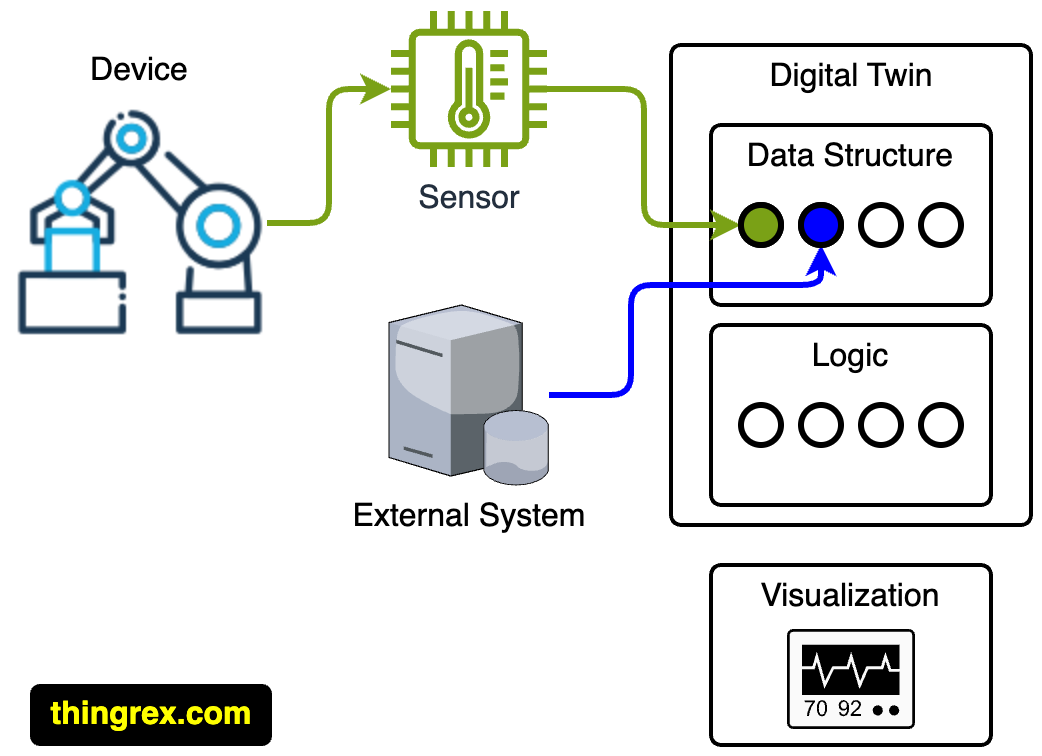
Today, I would like to focus on the Data Structure aspect of DT.
Designing that Data Structure is an iterative, manual process. We extend the Data Structure to improve the functionalities provided by DT.
The simplest real-life example is to track the equipment’s state (WORKING or IDLE).
That approach does not provide any hints as to WHY our machinery is IDLE - it might be broken, lack resources, or simply waiting for the next task.
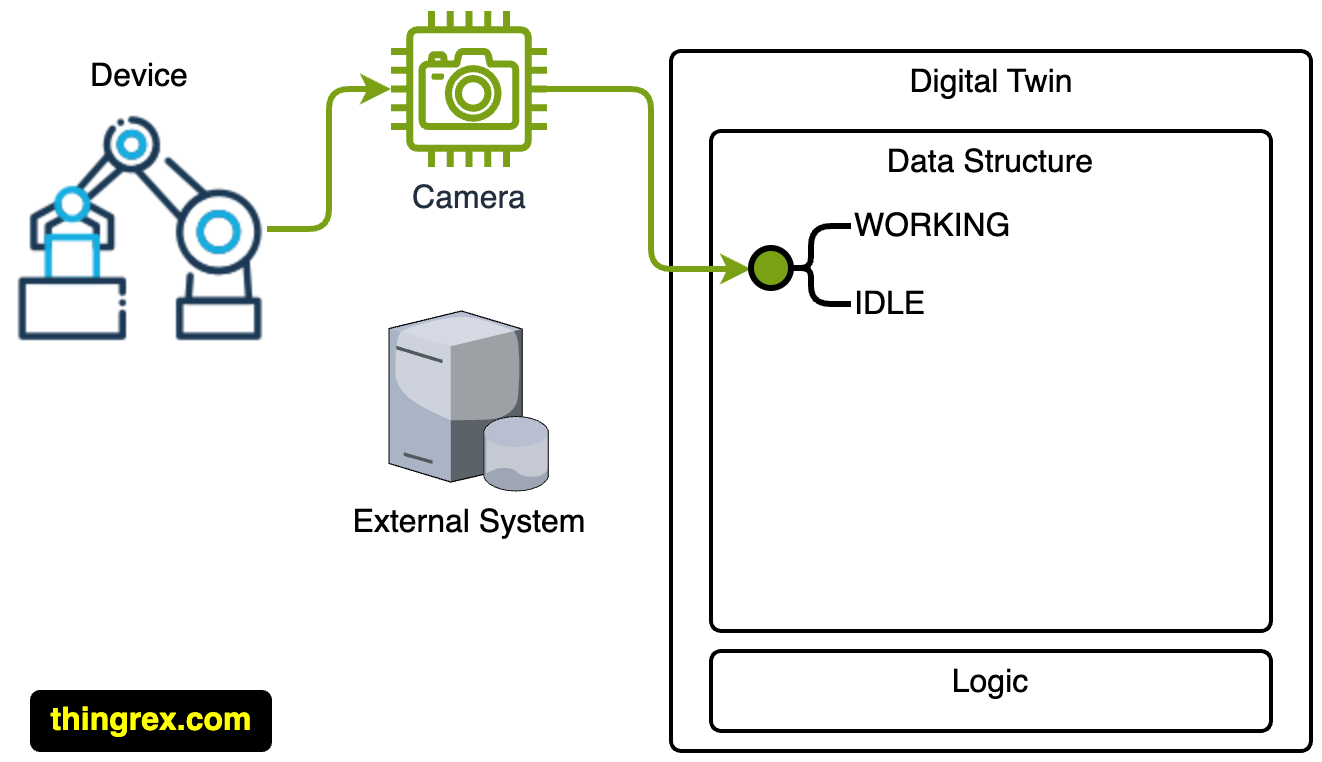
Why do I propose starting with such a simplified design? That is a great question; let me provide my reasoning.
Based on my professional experience, numerous companies do not automatically track the state of their equipment. As a result, they do not know the utilization percentage (how often they are losing money because their equipment is not producing).
Creating a simple DT representing the WORKING/IDLE state answers that vital question.
Designing and implementing that solution is relatively easy (requires limited time and money) and quickly verifies the premise.
Once we establish the basic framework, we can gather operational data to understand our environment.
For example, we can add RAW MATERIALS data structure to track information about materials used during production.
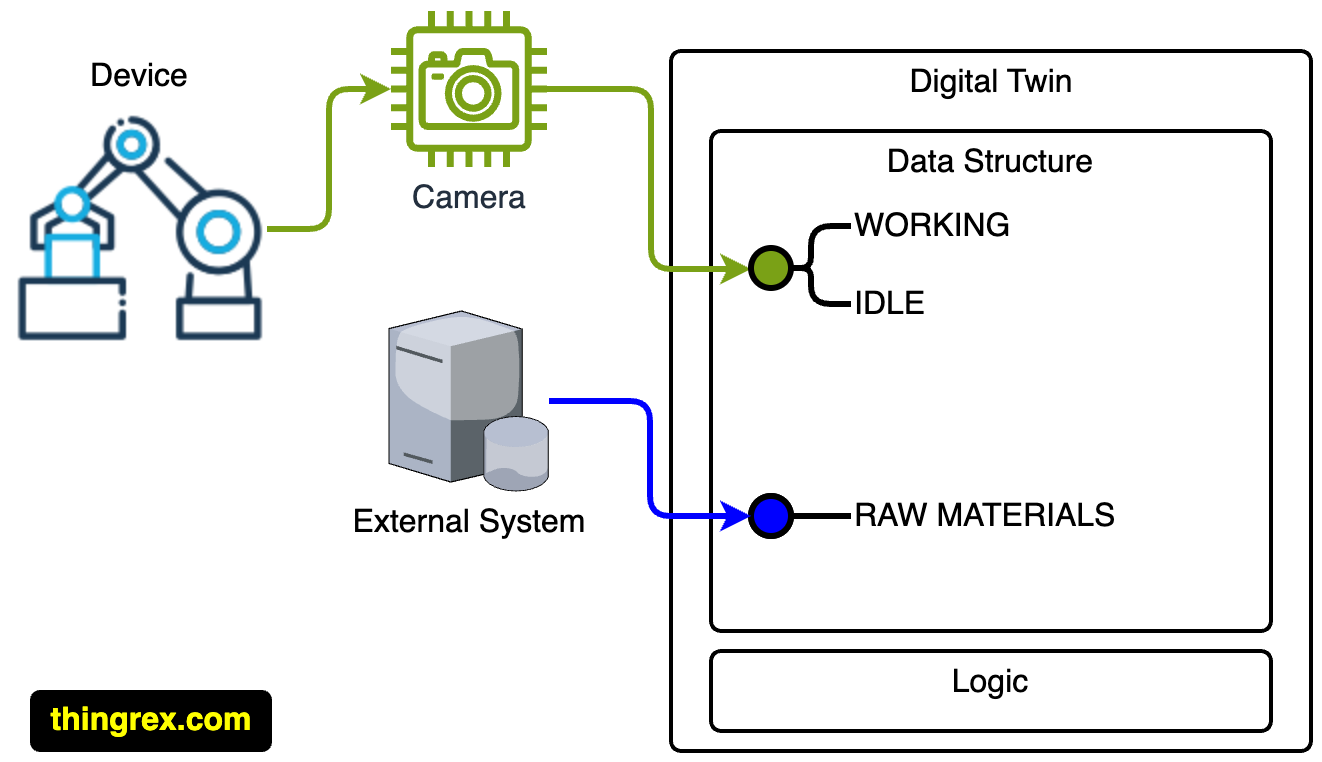
That opens an interesting opportunity to link the raw materials characteristics with the quality of the manufactured goods. Maybe we could perform some analytics to identify optimal setup and increase the profitability? That sounds like a good topic for my next article.
We can extend the Data Structure to record the equipment’s configuration, which allows further optimization.
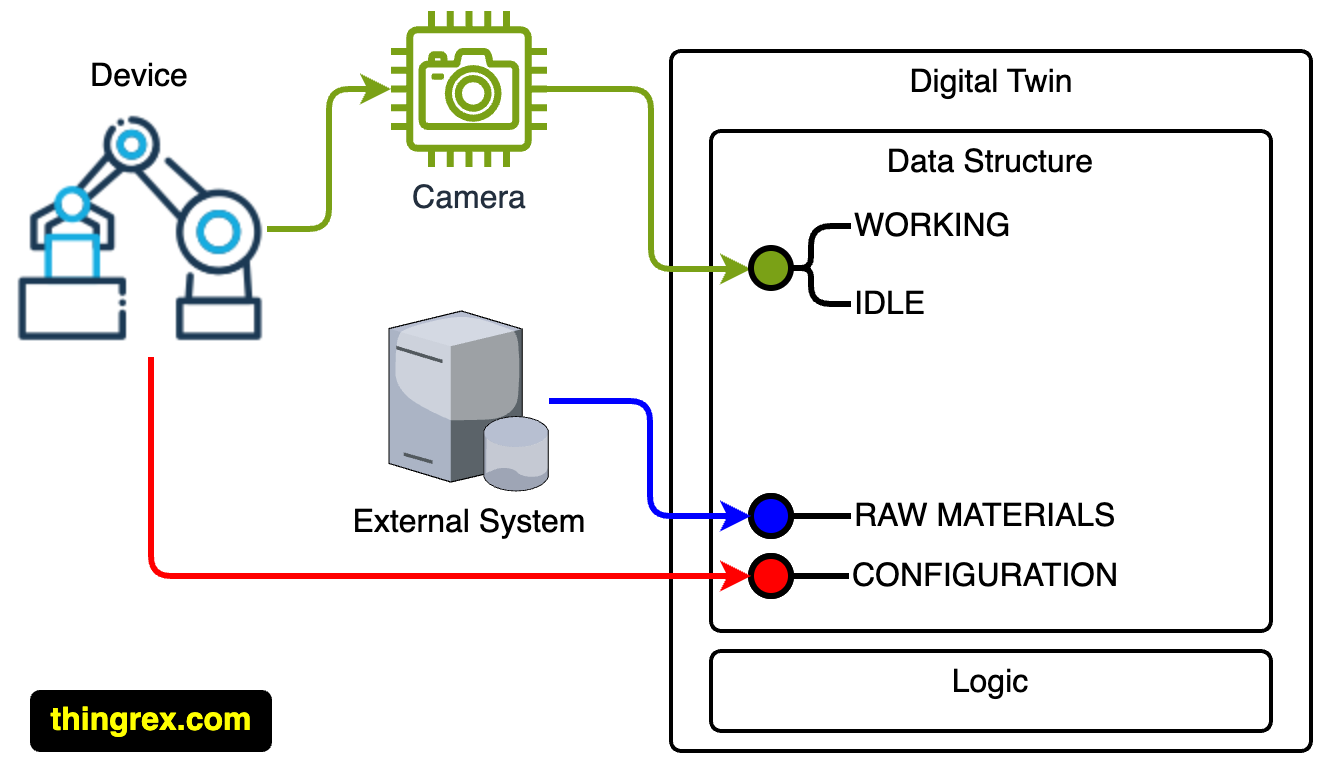
Finally, we can extend the capabilities of our sensor and track the state of our equipment more precisely. For example, we can distinguish BROKEN, NO RESOURCES, and WAITING states. That enables bringing the optimization to the production line level.
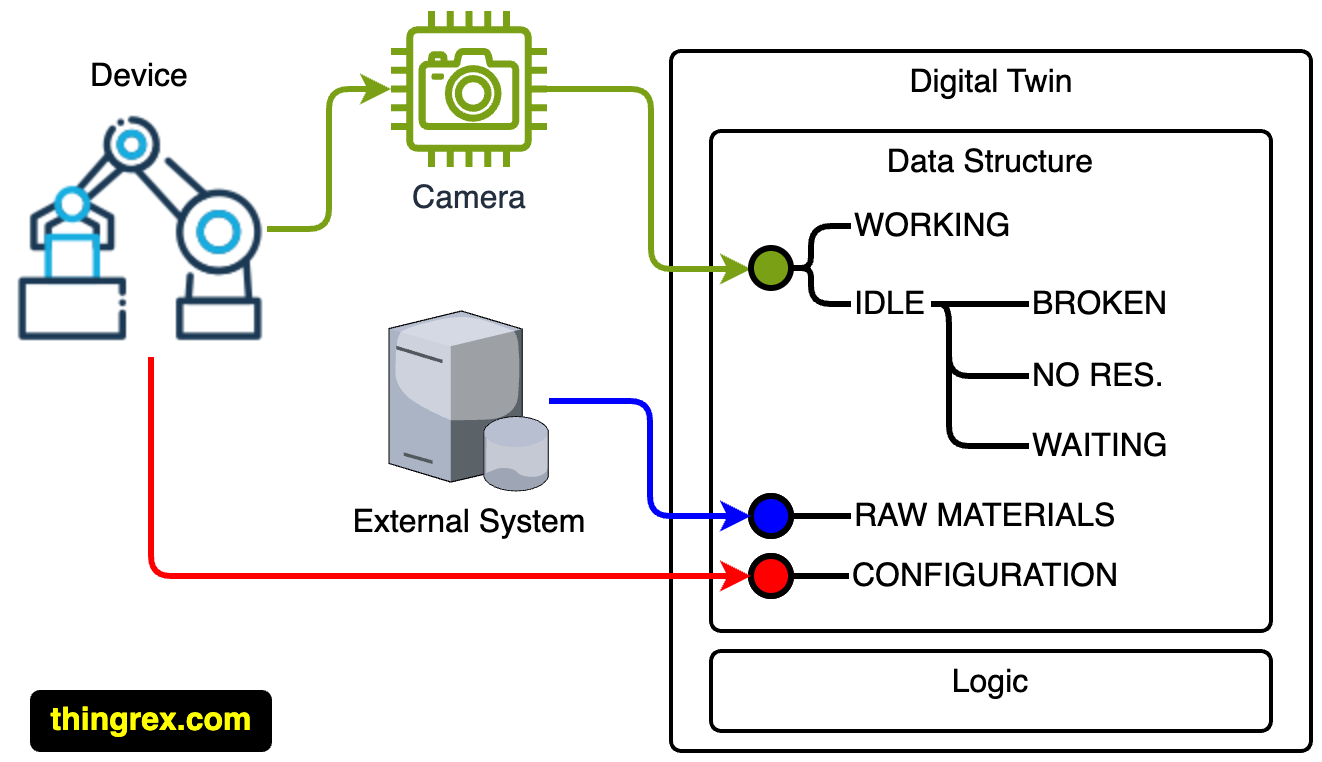
I described a sample appliance of Digital Twins to the manufacturing space, but it can be utilized in any IoT-enabled initiative and product.
I hope that this article was interesting for you.

